We investigated various small business lending statistics and trends and have compiled them to see if we could draw any conclusions about small business financing, success and failure rates, and the particulars of certain types of funding.
One of our bigger findings was that some of the classic elements of Fundability™, such as having a good personal credit history and a business plan, loom large for business failure and success, and the ability to get funding and loans.
Fundability™ is the life blood of businesses.
1. Percentage of Small Businesses That Applied for Loans
Per Fed Small Business, 43% of small businesses applied for a loan last year. Businesses turned to online lending institutions, the Small Business Administration, merchant cash advance providers, and institutional lenders (namely, pension funds or insurance companies).
Interestingly enough, the best success rate was with merchant cash advances. But that does make sense, as MCAs tend to accept businesses where the owners have lower personal credit scores, and there’s less time in business.
MCA providers also charge very high interest and offer short payback terms, so more approvals are probably in their best interest.
They do not fall under FDIC regulations, so they may not have regulators and lawmakers keeping them from okaying most funding applications.
Banks, in contrast, are subject to restraints on how much they can charge for interest. Many banks are mindful of avoiding bad loans as much as possible, remembering the subprime mortgage crisis of 2007 – 2010 (and the subsequent recession) all too well.
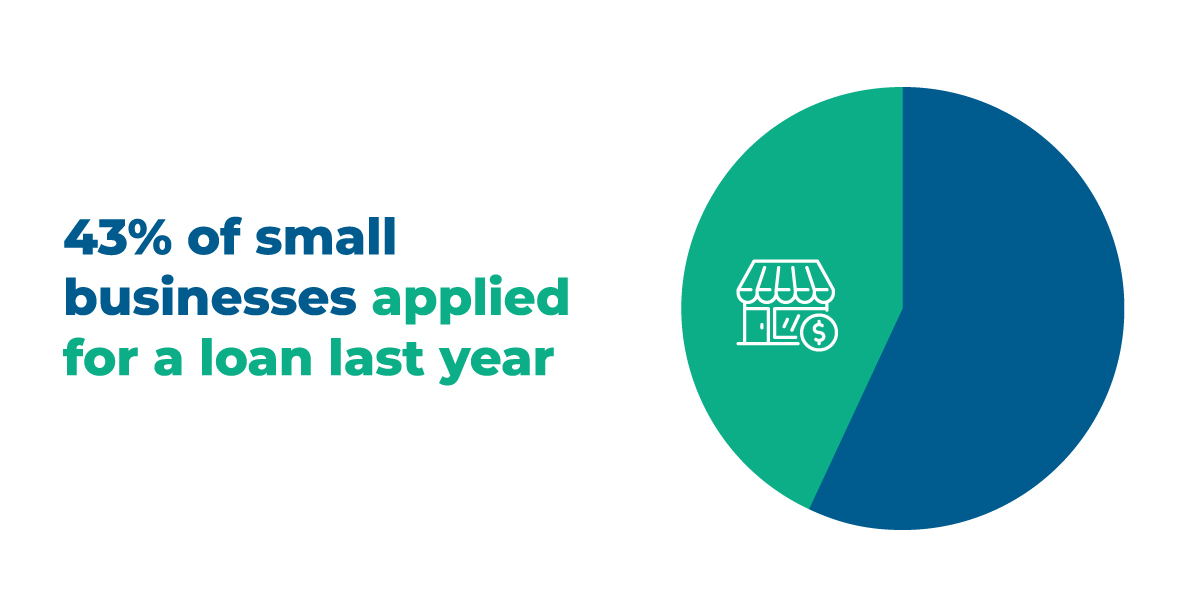
2. Percentage of Businesses That Fail Because of Insufficient Capital
As per data found at Business Insider, 82% of small businesses fail due to cash flow problems, 42% due to lack of market, 29% run out of cash, 23% due to having a mismatched team, and 19% are because of competition winning.
These numbers equal over 100% due to, most likely, allowing multiple answers to the question.
These numbers reflect tracks leading directly to business failure. With some statistics pointing to not having money, either enough or when a business truly needs it. While others are not performing a true market analysis to determine if there’s a need for the product or service.
In a late 2021 survey conducted by Goldman Sachs, “44% of [small] business owners had less than three months of cash reserves in the case of an emergency or a COVID-19 related shutdown.”
These issues can be averted, at least in part, by small business owners putting together a classic business plan or at least answering many of the questions which go into producing one.
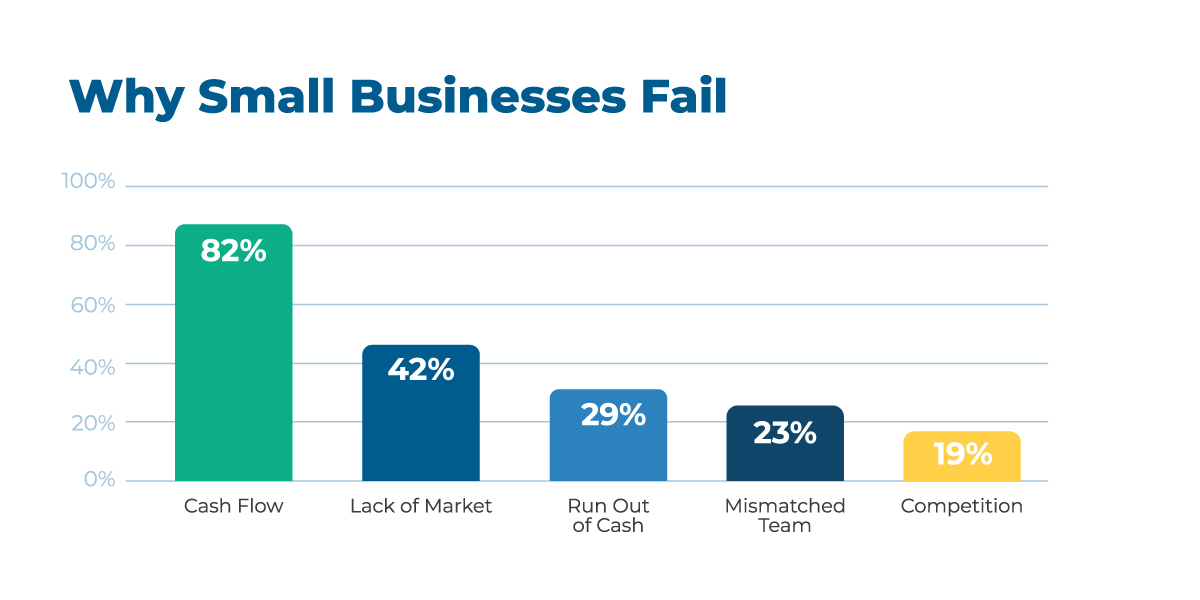
3. Average Debt Held by the Average Small Business
Many small businesses carry debt. In fact, it is a good form of financing, and we highly recommend it here at Credit Suite.
Per Bankrate, the average SBA loan in 2022 was $538,903.
Per Yahoo, 70% of small businesses carry some degree of debt with a total of $18 trillion owed by the end of 2022. But that amount fluctuates year-to-year.
Since only about a third of all small businesses will make it to their tenth year anniversary, it’s fair to say that a number of these debts will not be paid off, at least not in full.
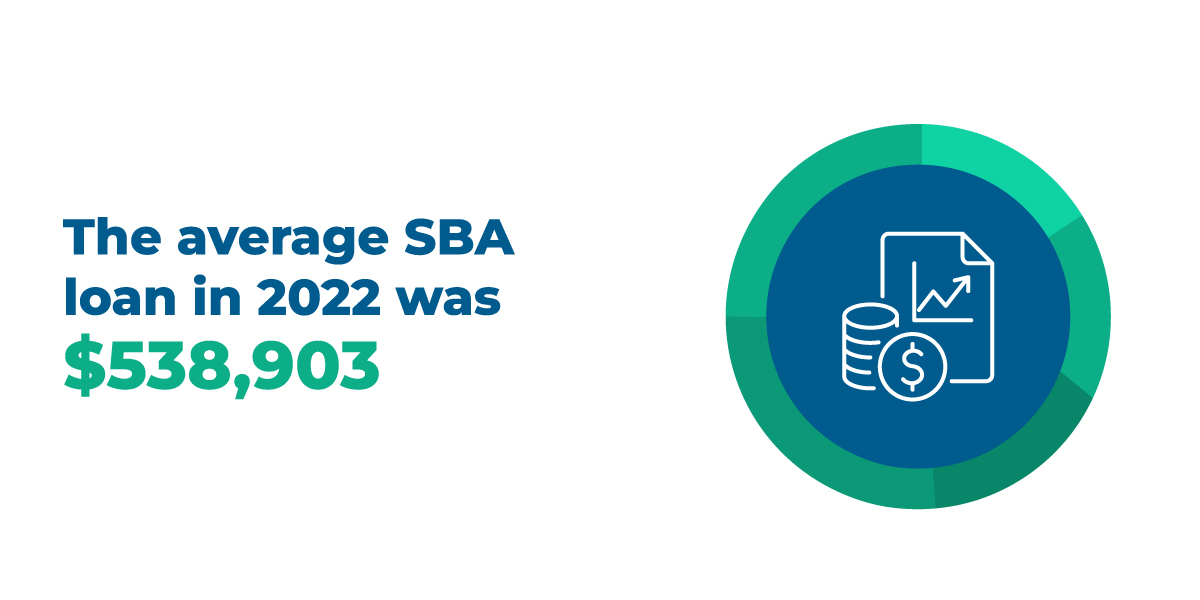
4. Percentage of Businesses That Had Their Loans Denied
According to Deskera 2020 key findings, 42% of small businesses applied to a loan from a big bank. But Fed Small Business reports a 68% approval rate in 2022.
In contrast, Finder reports 43% applied to smaller banks in 2020 with 82% approval rate according to the same Fed Small Business report.
Would online lenders approve fewer applications if there were more such applications? It’s entirely possible that they would. But keep in mind that alternative lenders tend to require less time in business and are all right with lower FICO scores.
If an entrepreneur falls between the FICO score requirements of banks and those of alternative lenders, it’s quite possible that they would fail to get a loan at a traditional financial institution but succeed at getting one from an online lender.
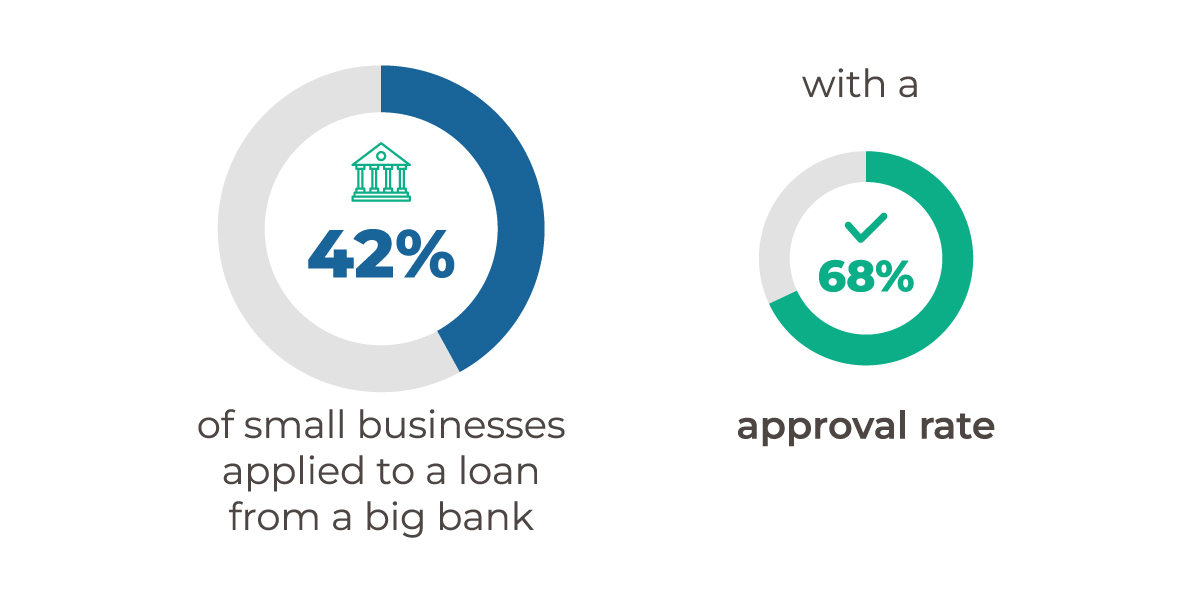 5. Average Credit Score for Loan Applications
5. Average Credit Score for Loan Applications
According to a 2018 survey by the FDIC, large banks were more likely to use owner FICO score as a criterion for lending than a small bank was. https://www.fdic.gov/resources/publications/small-business-lending-survey/2018-survey/index.html
Per FinImpact, the average FICO score for business owners overall (that is, both loan applicants and not) is 721.
As a result, the average owner has a better FICO score than the majority of Americans. A score of 721 puts them above the national average of 673 by a good 48 points.
However, despite such a good score, business owners have a larger debt load than the average American citizen. As you may expect, this is largely due to the expenses of starting a business.
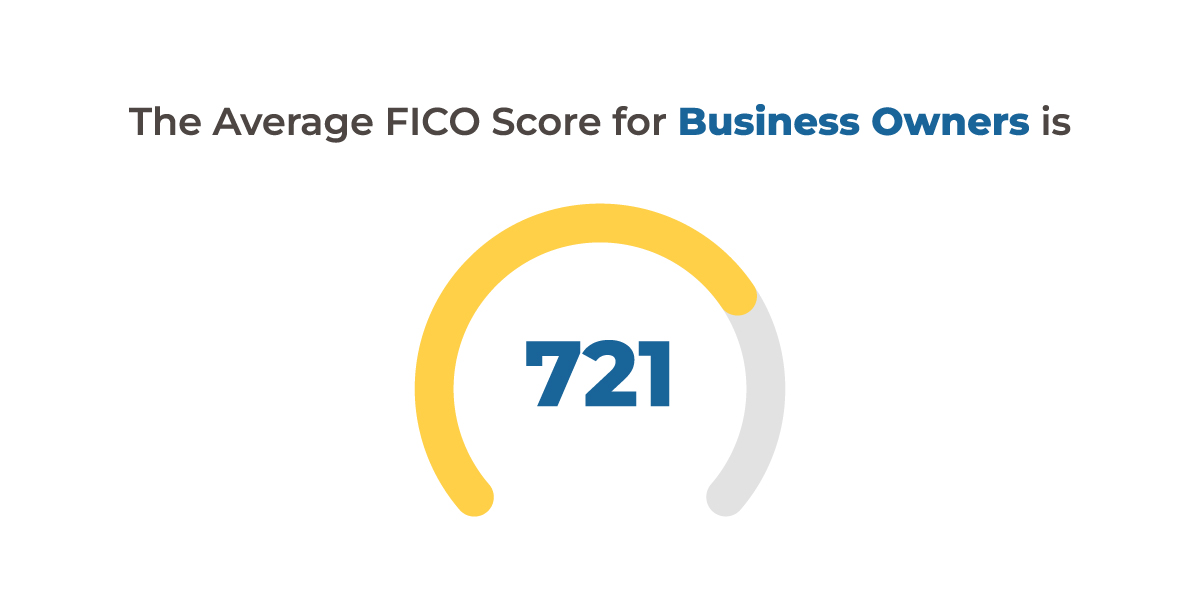
6. Percentage of Businesses Getting the Entire Loan Amount They Applied For
According to the Federal Reserve System’s Small Business Credit Survey, “the share of applicants that received the full amount of financing sought was increasing pre-pandemic but has declined since the onset of the pandemic.”
In 2019, per that survey, the percentage of nonemployer and employer firms getting everything they asked for was about 50% in 2019. By 2021, that figure had dropped to 31%.
The survey found racial discrepancies in the amounts of financing received. In 2021, 35% of white-owned applicant firms got all the financing they sought. Compare this with 16% of Black-owned firms, 15% of Asian-owned firms, and 19% of Hispanic-owned firms.
Currently, after the pandemic, industry has become a more important factor in financing success. In 2021, the share of leisure and hospitality firms receiving all of the financing sought fell to 20%. Yet 47% of manufacturing firms received the full amount.
7. Reasons for Funding
In 2020, according to the Fed’s Small Business Credit Survey, 56% of all businesses sought financing (particularly credit) in order to meet operating expenses.
Note: businesses were able to choose more than one answer.
In contrast, a 2018 survey by the FDIC (banks were able to select more than one answer), said that amortizing term loans and balloon term loans were by far mostly used for fixed asset and equipment financing.
Do older businesses succeed because they’re older? Or do they succeed because being older opens up more opportunities for funding?Lines of credit were more likely to be used for working capital or inventory, and somewhat less likely for accounts receivable financing purposes.
Also, some purpose numbers may be a bit off, as regulatory Call Reports categorized loans secured by real estate by their primary collateral rather than by purpose.
The Call Report therefore considers a small business loan secured by a one to four family residential property to be a home mortgage rather than a business loan. This is so even if the purpose is to support the operations of a small business.
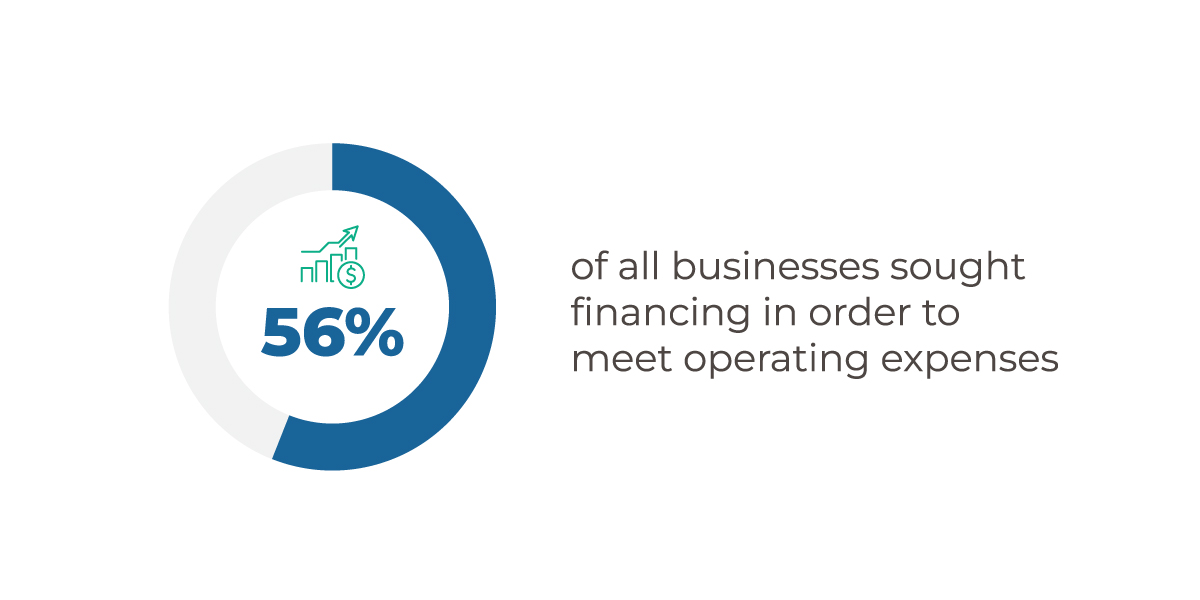
8. Percentage of Businesses With Outstanding Debt
According to a Federal Reserve 2021 survey, the number of businesses with no outstanding debt went down from 2017 to 2021.
In 2021, as per the survey, about 25% of businesses had no debt. About 10% of all businesses had debts of under $25,000 (so, over 13% of all businesses with debt). In fact, that percentage fell from 2017 to 2021, but it was in favor of much larger business debts.
Some of these differences are directly attributable to the advent of PPP loans. The only areas where percentages decreased were businesses with no debt, and those with under $25,000 owed.
In those four years, debt amounts increased, and the percentage of debt-free businesses fell.
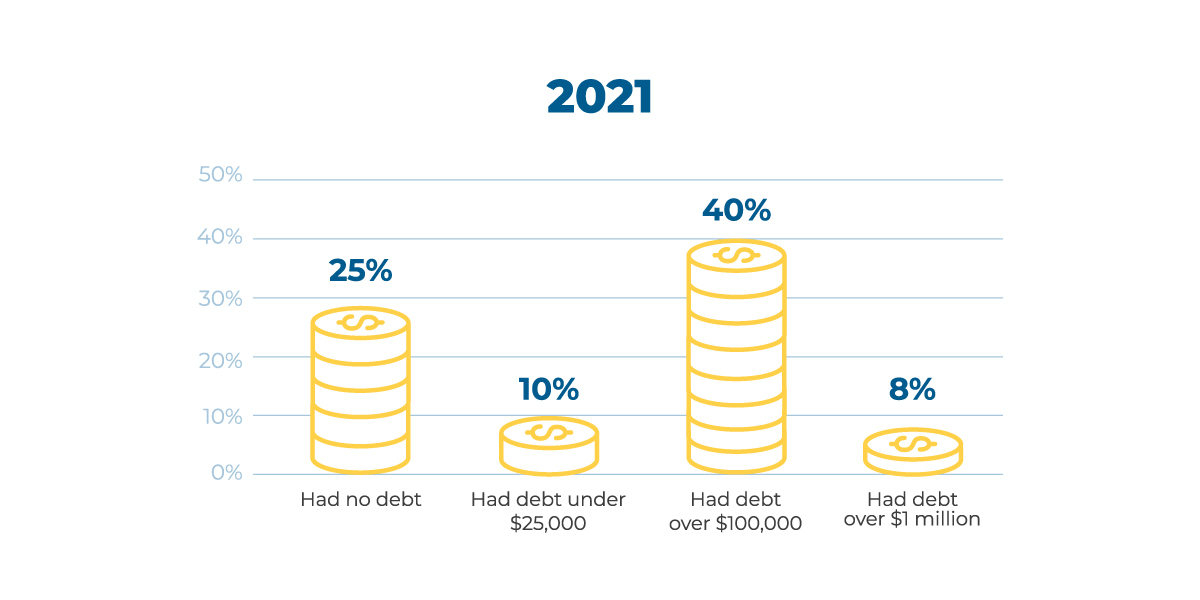
9. Average Interest Rates
This is going to depend on which bank, program, or administration the loan comes from. For example, as per Bankrate, SBA interest rates range between 10.50% to 16.25%.
But interest rate issues changed during the pandemic. According to Finder, thirty-two percent of business owners applied for a loan in order to refinance or pay down debt in 2020, in contrast to 30% in 2019.
But rates are rising, so refinancing has become a less attractive option for a small business.
On the other hand, per Zippia, rising rates are making small business lending more profitable for lending providers. Hence, we may see more approvals or at least more applications.
And if a lending provider can swing a long term loan for a borrower (say, for the length of a standard mortgage), and the amount is for something like half a million dollars, the amount of interest paid would top $1 million easily.
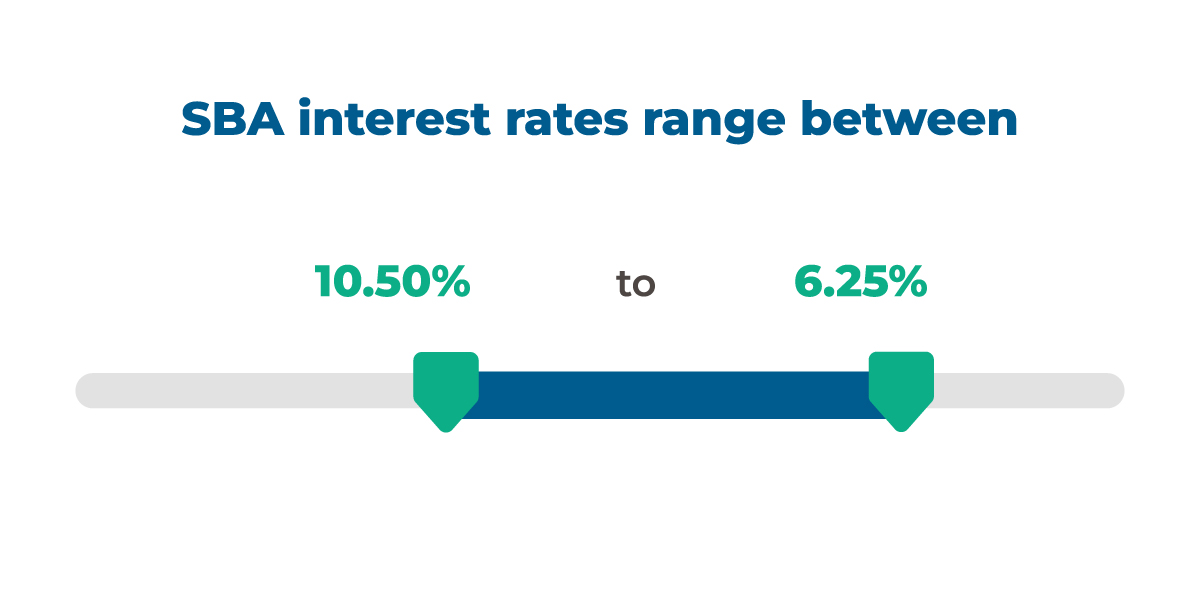 10. Total Number of Loans Distributed By SBA and the Average SBA Loan Size
10. Total Number of Loans Distributed By SBA and the Average SBA Loan Size
Per Chamber of Commerce, “The SBA distributed over 14 million loans worth $764 billion to small businesses in 2020.”
According to Investopedia, $500 billion of if was a result of COVID-19 relief.
This means that a good 96% of the loans distributed by the SBA in 2020 were just for COVID-19 relief. And while SBA loans can go as high as $5 million, the average for SBA loans is $417,316.
The reason for the lower average is, potentially, due to the fact that a loan of over $25,000 is going to require collateral. Also, business owners may not have had good enough cash flow and/or personal credit to qualify for higher amounts.
Or, business owners may have opted for microloans or requested lower amounts, due to a fear of not being able to get an approval.
Owners may have also relied, instead, on the Paycheck Protection Program as, according to FinImpact, the PPP provided 5.2 million loans worth more than $669 billion.
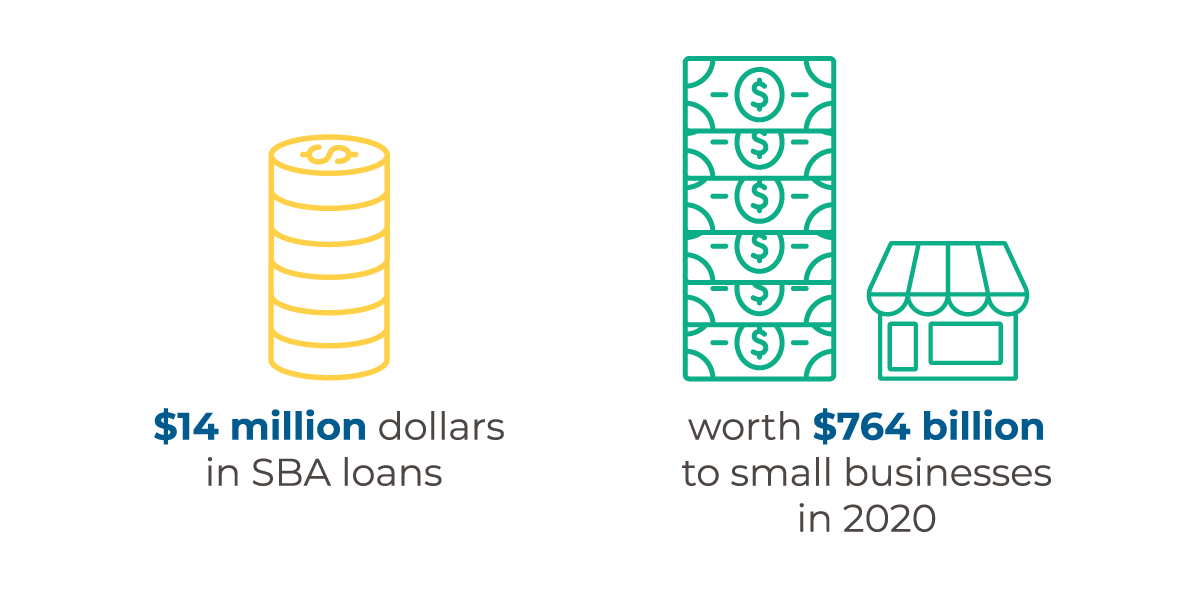 11. Percentage of Small Businesses That Fail
11. Percentage of Small Businesses That Fail
Per Zippia’s November 2022 data, about 21.9% of all small firms fail within their first year (the Census Bureau agrees). This number jumps to 31.8% in the second year, and 39.7% in the third year. In year five, it’s a wash, with half of all businesses failing.
The failure rate for companies in business for ten years is 65.7%. Essentially, the hardest years are the first three to five. Once a business gets past the six year mark, it isn’t necessarily smooth sailing. But the chances of failing do drop.
By the time a business has weathered its first half-decade, a small business owner has, presumably, learned from their earlier errors. By this time, a small business has likely been able to build something of a business credit score.
A better score, coupled with more time in business, can make loan approvals more likely. More access to capital is also going to raise success rates for small businesses, making this stat a bit like the chicken and the egg.
Do older businesses succeed because they’re older? Or do they succeed because being older opens up more opportunities for funding?
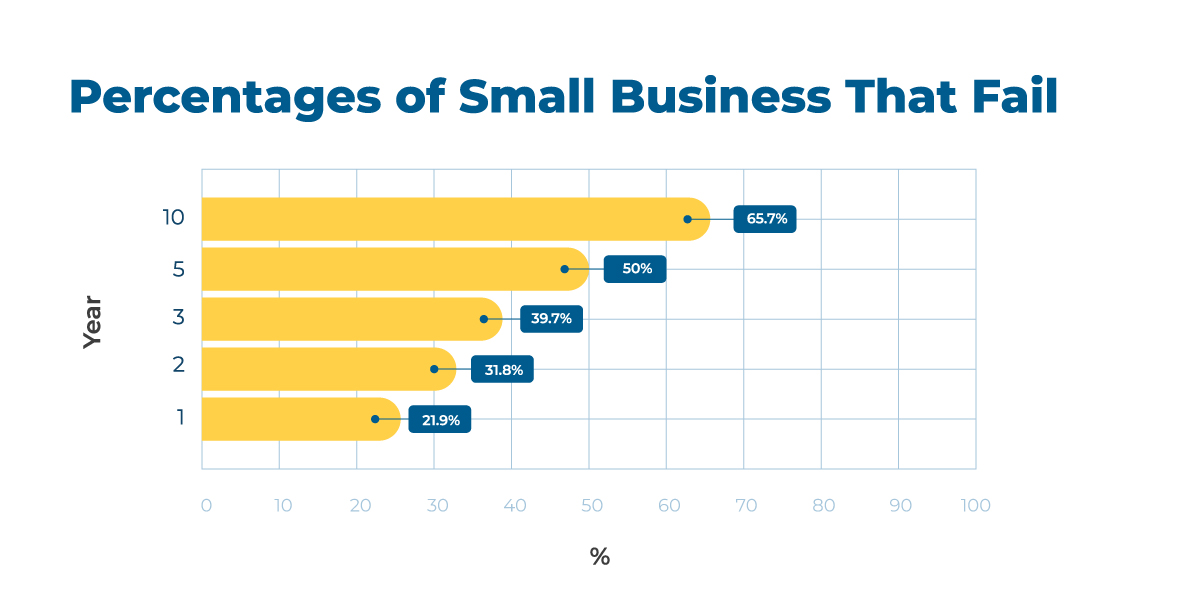
12. Average Bank Loan Size
According to small business statistics from FinImpact, the average size of all business loans was $107,000 in 2017. These mainly came from larger banks. Businesses looking for larger loans tended to go for bank lending.
These larger loans were also more often to be commercial bank lending.
But more than half of all business loan applicants applied for $100,000 or less. Smaller banks, online lenders, and peer to peer marketplaces were popular for smaller loan amounts.
By 2020, as the effects of the pandemic started to really ripple across the small business community, the average bank loan climbed to $108,000.
With the PPP program over, and the Federal Reserve Bank taking over failing banks, not as many entrepreneurs are going to want to fill out a loan application.
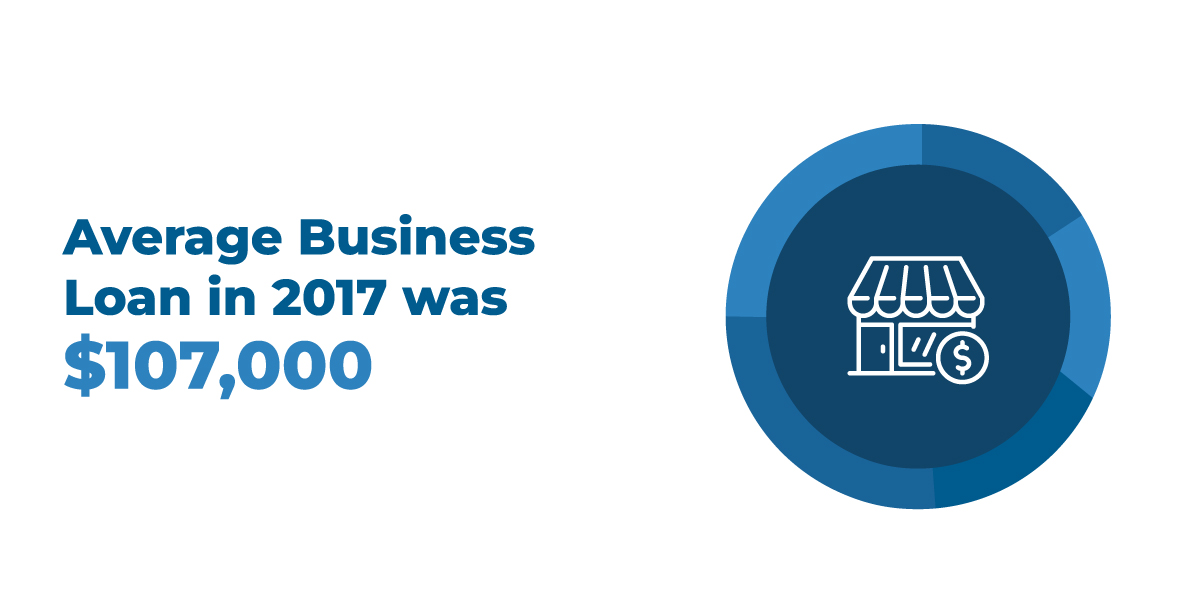 13. Percentage of Businesses That Use Loans to Acquire New Assets
13. Percentage of Businesses That Use Loans to Acquire New Assets
One use of small business loans was to acquire new assets for the business. As per Fundera, in 2019 a good 56% of small businesses had applied for funding to expand their business, pursue a new opportunity, or to acquire business assets.
But the pandemic affected business growth plans for many. As per Yahoo Finance, only 38% of small businesses taking out loans intended to use them to expand their business in any manner.
Per Finder, firms which were concerned about staying afloat had different purposes for the money. Entrepreneurs could provide more than one answer to the question of what they were using the cash for.
14. Loan Approval Rate by Big Banks
An entrepreneur (like those running women owned businesses) might look to a large bank for funding, but the approval rate is not going to be the greatest.
As per FinImpact, in the second quarter of 2021, only 13.6% of loan requests to larger banks were approved. But small companies had some options and there were ways to improve the numbers.
Businesses turning to a credit union would see a better percentage than at large banks, but not as good as online small business lending. The approval rates of credit unions were only 20.5%.
Per Finder, collateral was one great way to increase a small business’s chances at a loan. Merchant cash advances had higher approval rates, at 84%.
Working with the SBA was another, but the SBA was no guarantee of loan acceptance, as SME lending providers only approved about 65% of small business loan applications.
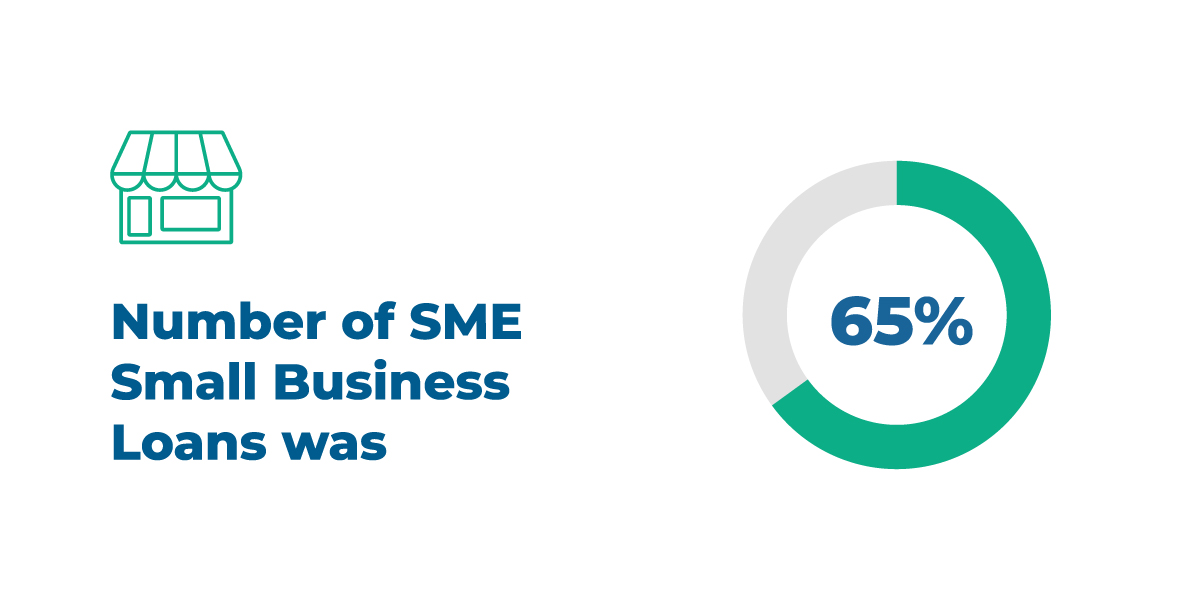
Takeaways
The pandemic threw a wrench into a lot of entrepreneurs’ plans for their small businesses. The average small business owner was more likely to try to borrow funds in order to survive or to pay down debt.
But as times change and the Fed keeps on increasing rates of interest, small business finance will change along with it, and entrepreneurs may be more inclined to borrow in order to go past surviving and start thriving.
